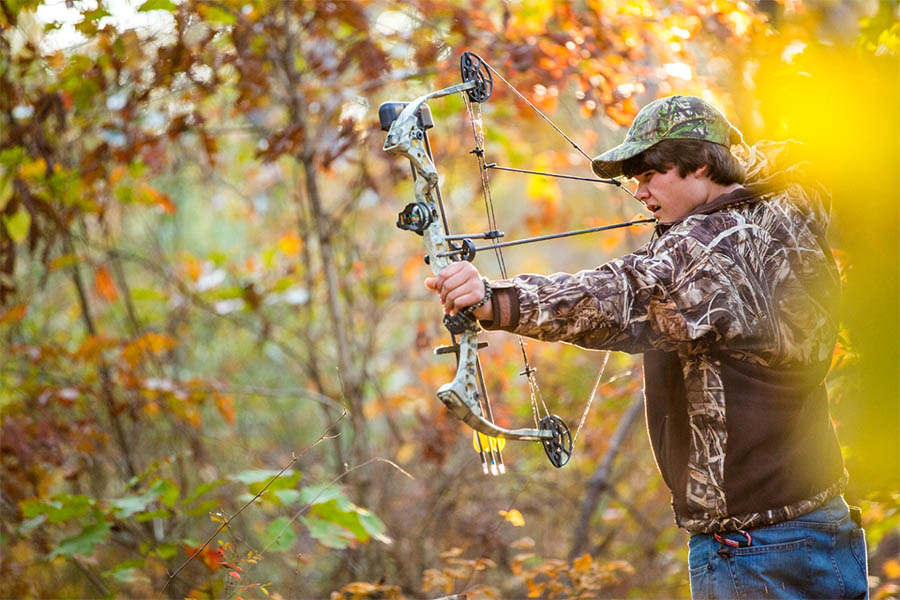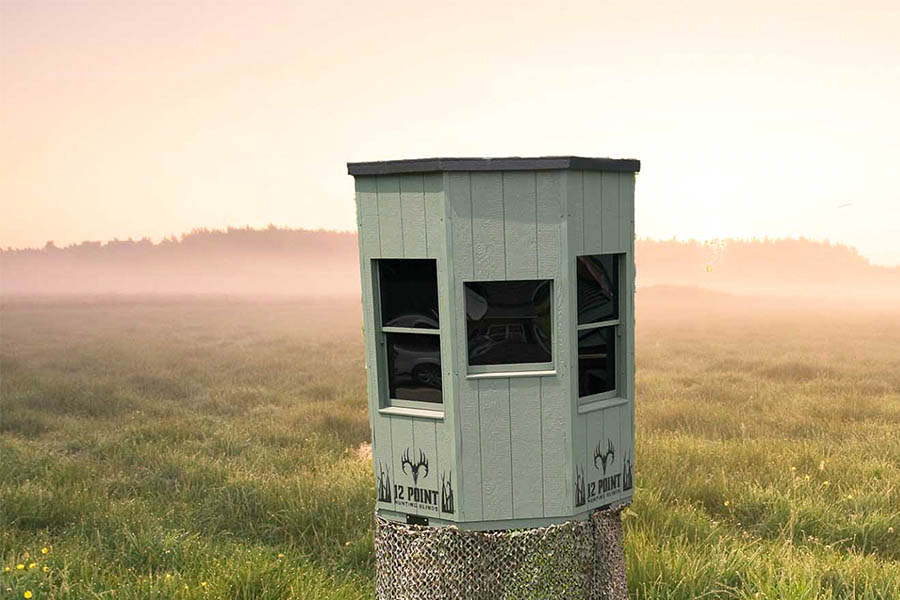A Blind for Every Hunt
There are many different hunting styles, each catering to different game animals. Depending on the animal, hunters may opt to actively pursue game through techniques like stalking, jump shooting birds, or doing a game drive where a couple of hunters push game towards their friend waiting ahead. However, active hunting techniques aren’t always the most productive, sometimes it is best to sit and wait, for many game species this means setting up in a blind.
Hunting blinds are structures or natural cover that allow hunters to blend in with their surroundings and remain concealed while hunting. They can be made from a variety of materials, such as wood, metal, or fabric, and can be permanent or portable. Blinds can be used for hunting a variety of game, including waterfowl, deer, turkey, and small game.
The best blinds provide a good hiding place where game animals will not feel like they are being hunted, giving hunters a greater chance of a close-in shot. As a bonus, in many climates, the blind also serves as a shelter from harsh weather, allowing hunters to be more comfortable while hunting. There are several types of hunting blinds, each with its own benefits. Here is a breakdown of some of the most common hunting blinds and their benefits:
Solid Ground Blinds
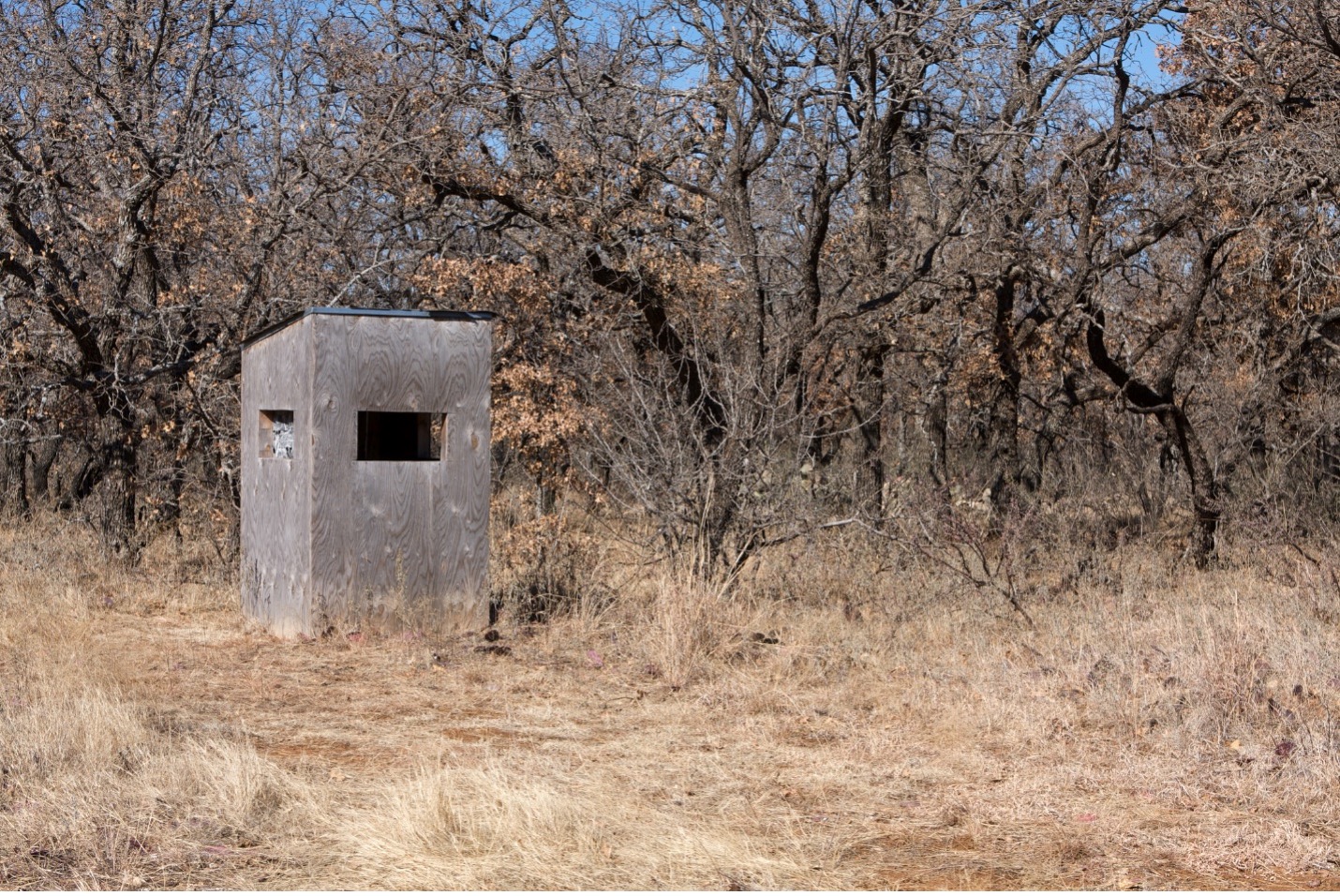
Ground blinds are portable structures that can be set up on the ground and used for hunting a variety of game, including deer and waterfowl. These blinds are made from fabric or camouflage material and are designed to blend in with the surrounding environment while protecting from the elements. Solid ground blinds are relatively easy to set up and take down, making them a convenient option for hunting on the go, although they are not as portable as a pop-up ground blind. They also tend to be easy to store and can be loaded into a car or truck.
One of the main benefits of ground blinds is that they provide excellent concealment for the hunter. The blind’s camouflage material helps the hunter blend in with the surrounding environment, making it more difficult for game to detect their presence. These blinds can also be purchased with different camouflage meaning that you can customize the look to match your hunting environment.
Ground blinds also protect from the elements, such as wind, rain, and snow, allowing the hunter to stay comfortable while waiting for game to appear.
Pop-Up Ground Blinds
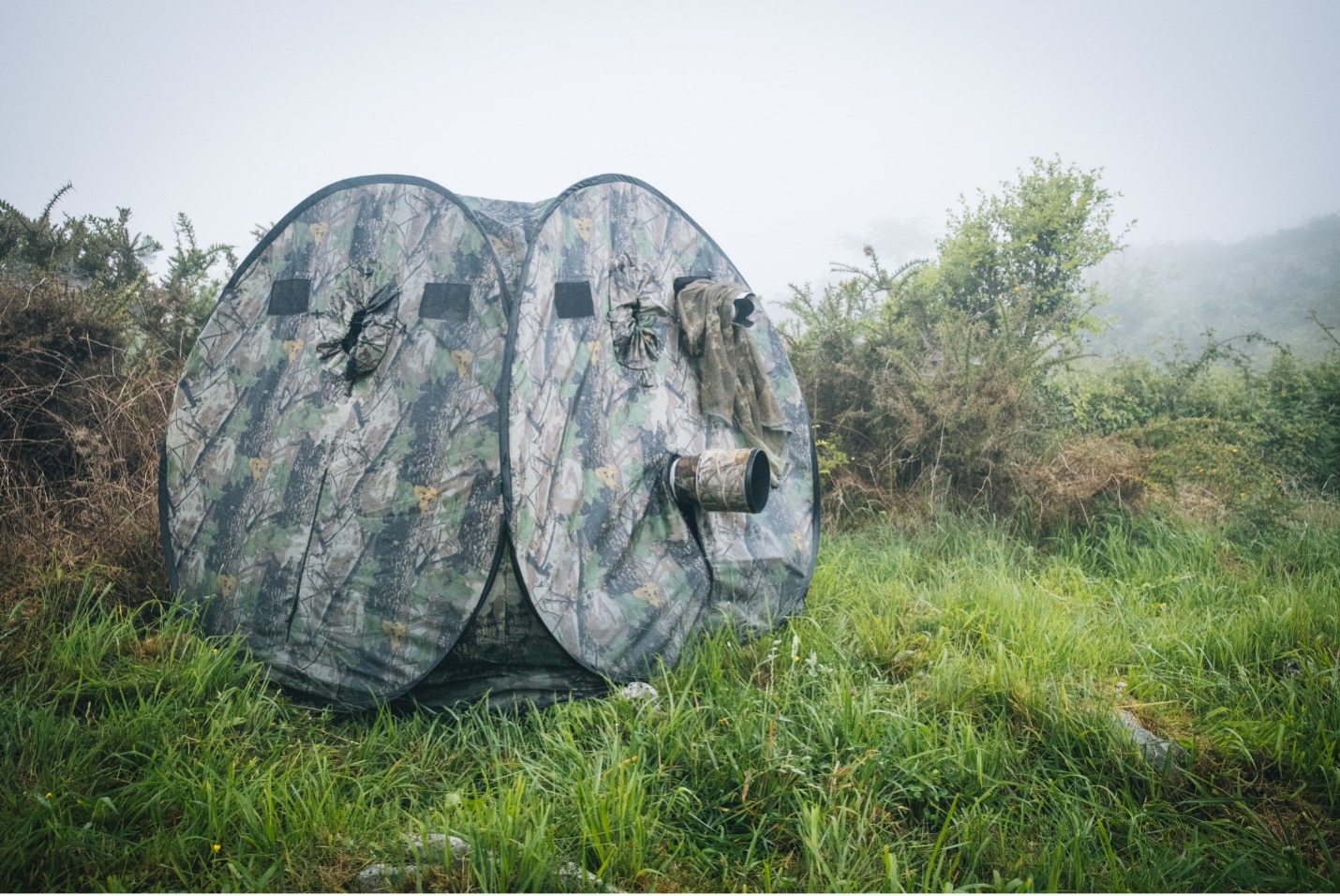
Pop-up blinds are portable structures that are designed to be set up and taken down quickly. These are very similar to solid ground blinds but they are a bit lighter weight and designed for even more portability, allowing the hunter to change locations throughout the day. They are typically made from fabric or camouflage material and are designed to blend in with the surrounding environment. Pop-up blinds are lightweight and easy to carry, making them a convenient option for hunting on the go.
One of the main benefits of pop-up blinds is that they provide excellent concealment for the hunter. The blind’s camouflage material helps the hunter blend in with the surrounding environment, making it more difficult for game to detect their presence. Pop-up blinds are also easy to set up and take down, making them a convenient option for hunting in different locations.
The biggest downside to pop-ups is that they do not offer as much in the way of shelter from snow, rain, or wind, which can make hunting in them more difficult on frigid winter days.
Tree Stands
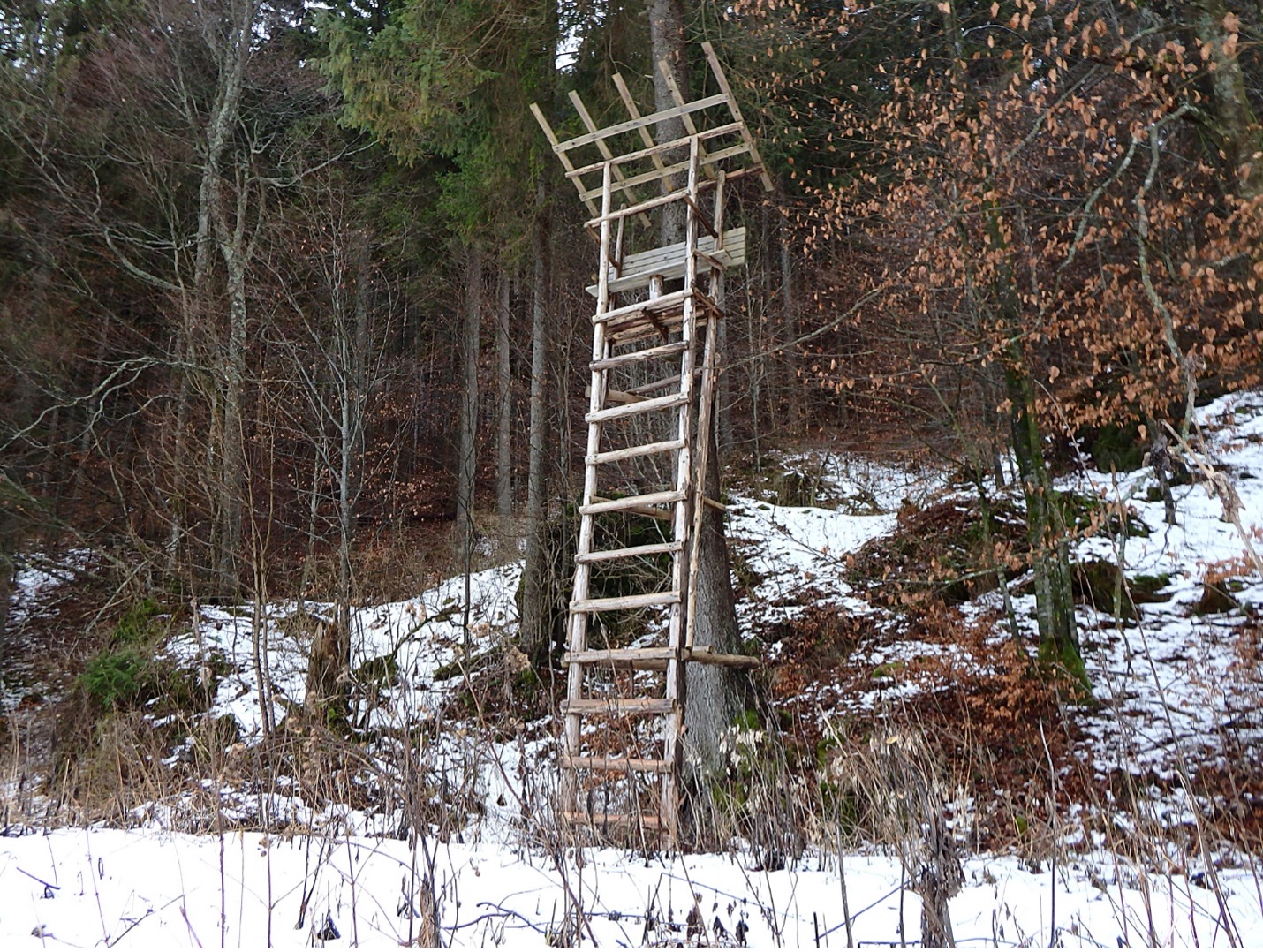
Tree stands are platforms that are placed in trees and used for hunting. They can be permanent or portable and are typically made from metal or wood. Tree stands offer a number of benefits for hunters, including the ability to hunt from an elevated position, which can give the hunter a better view of the surrounding area and make it easier to spot game.
Another benefit of tree stands is that they provide a level of concealment for the hunter by placing them above where game typically is looking. The platform is usually surrounded by leaves and branches, which can help the hunter blend in with the tree and remain concealed from animals. Tree stands also provide a comfortable and stable platform for the hunter to sit or stand on while waiting for game to appear.
While tree stands offer a vantage point that ground blinds do not, they do not offer any protection or concealment outside of the hunter’s clothing. Generally, this is not an issue if the hunter is wearing high-quality camo that matches the environment.
Treestands in most areas of the United States are used to hunt deer. Hunters may set out a bait pile, where permitted, or decoys nearby to entice the deer to come in. All of this increases the odds of a successful hunt and the potential of packing the freezer full of meat.
Box Blinds
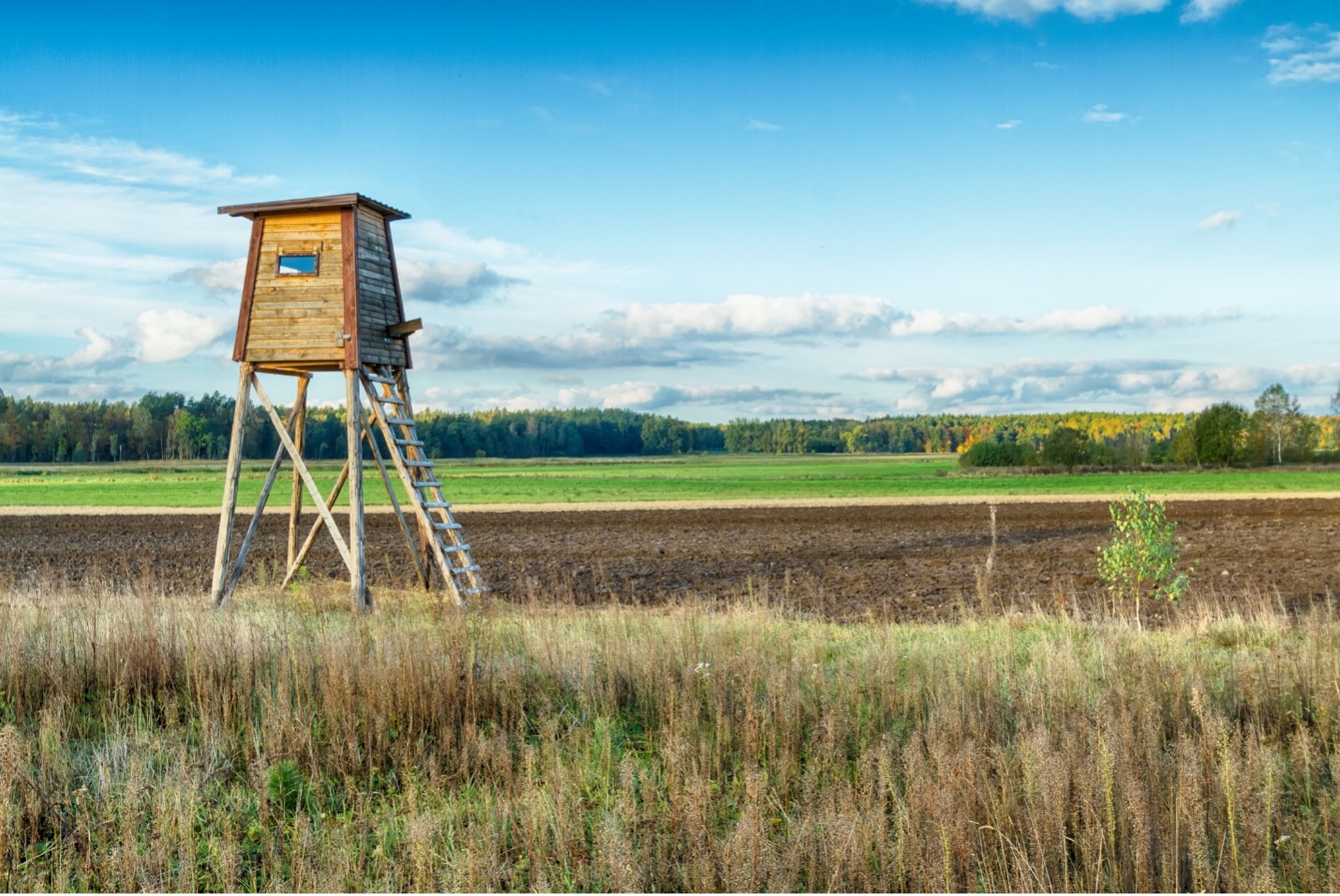
Box blinds are permanent structures that are typically made from wood or metal. They are designed to provide a comfortable and secure place for the hunter to sit while waiting for game to appear. Box blinds are often used for hunting deer and are typically placed near a food source, such as a corn field or food plot, this is due to their permanent nature.
One of the main benefits of box blinds is that they provide a level of comfort and convenience that is not possible with other types of blinds. They often have windows and shooting ports that allow the hunter to observe and shoot game, and they can also be outfitted with amenities such as chairs, heaters, and electricity. Box blinds also offer excellent protection from the elements, making them a comfortable option for hunting in all types of weather.
The one obvious drawback to box blinds is that they are not portable, at least not on a hunt-by-hunt basis. This means a hunter needs to scout extensively to determine where the animals are and where they like to travel. However, once a good location is established it is possible to hunt for many seasons in one spot with great success.
Natural Cover
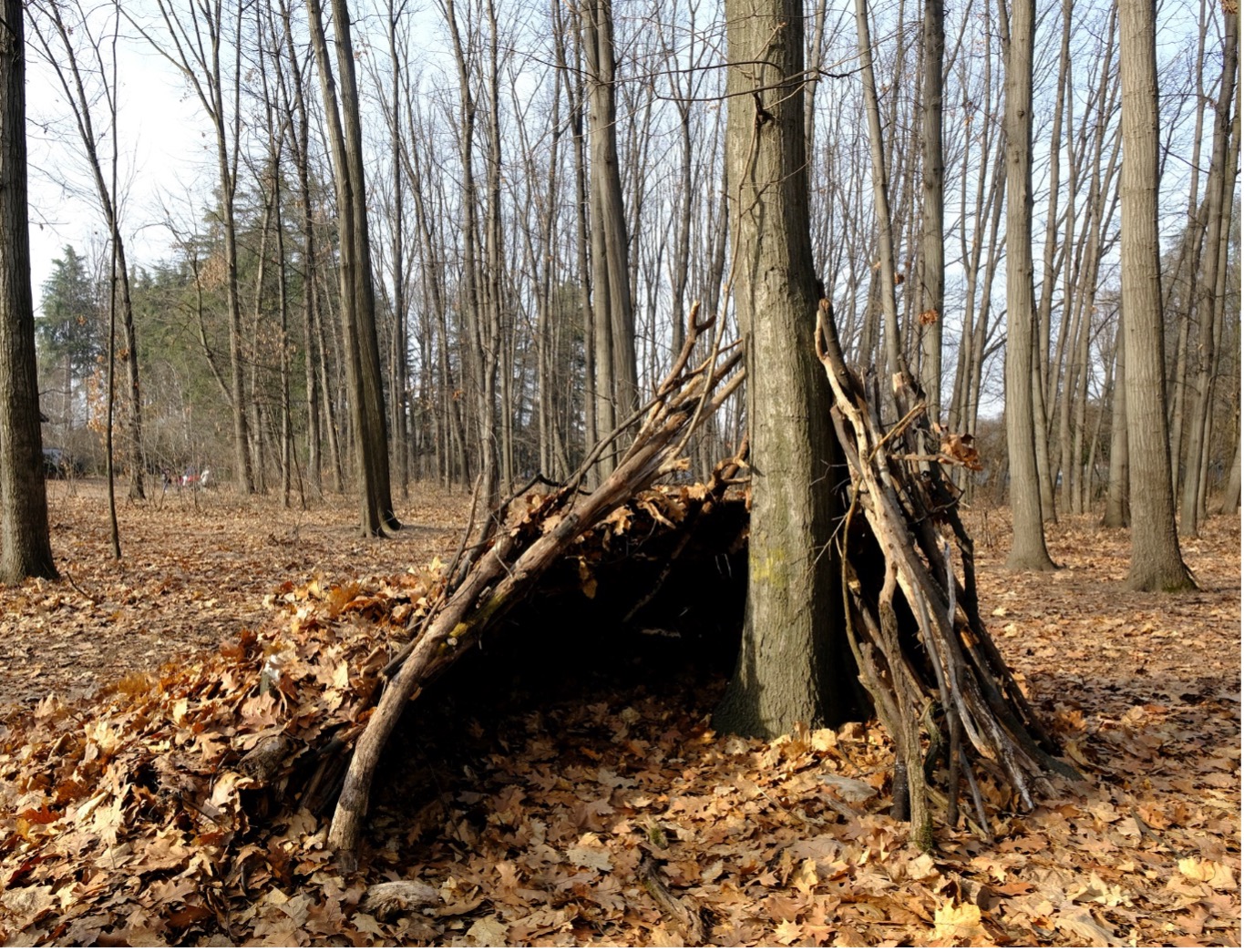
When all else fails, using what nature gives you is always an option. Natural cover, such as trees, bushes, and tall grass, can be used as a type of hunting blind, the hunter needs to take these natural elements and fashion them into a sort of shelter. This option allows the hunter to blend in with the surrounding environment and remain concealed from game. Natural cover can provide some protection from the elements, but it may not be as effective as a man-made blind in extreme weather conditions.
One of the main benefits of using natural cover as a hunting blind is that it is often readily available and does not require any setup or takedown. It can also be a more cost-effective option compared to purchasing a man-made blind. Additionally, using natural cover allows hunters to match their natural environment much more effectively because the materials are all local. However, natural cover may not provide as much concealment as a purpose-built blind, and it may not offer the same level of comfort or amenities.
To get the best of both worlds, permanent and portable shelters can have natural cover added to them for extra camouflage. The hunters simply need to gather some materials from nearby and lay them on top or attach them to the sides to get the benefit of local camouflage with the benefits of more permanent blinds.
Pit Blinds
Another type of blind that may be less common is a pit blind. Usually found in midwestern cornfields, pit blinds are exactly what they sound like, a big pit in the ground. This pit is covered with natural vegetation or a plywood roof that allows hunters to pop out when birds are flying.
Pit blinds are most frequently used to hunt geese. Hunters can lay a spread of decoys out and sit to monitor any geese that may be coming in. The biggest benefit to these binds is concealment. It is very easy to blend in with the ground and geese see the blind as a simple board on the ground.
Drawbacks to these blinds include ease of entry, exit, and use. For short hunters, it may be difficult to get a good clean shot out of the pit. For older hunters, getting into and out of the blind can also be a challenge and may require additional equipment like a ladder.
Closing
Hunting blinds are an essential tool for any hunter looking to blend in with their surroundings and remain concealed while hunting. There are several different types of hunting blinds to choose from, each with its own benefits. Whether you choose a ground blind, pop-up blind, tree stand, box blind, or natural cover, or pit blind the right hunting blind can make all the difference in your hunting success.
The key is to match the blind strategy with the game and location that you are hunting. Thinking about the need for portability, warmth, and concealment are all important when choosing a blind and can lead to a successful hunt and more meat in the freezer.
Shop for Hunting Blinds Online – CLICK HERE


